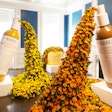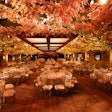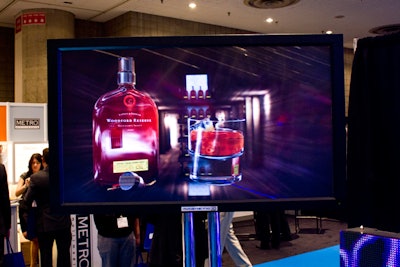
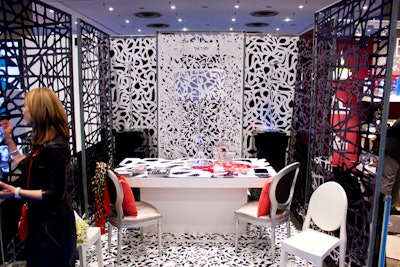
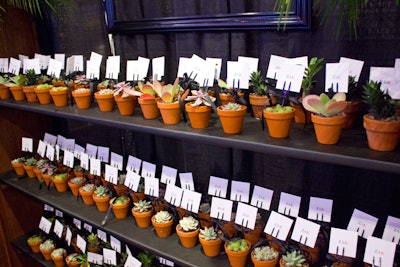
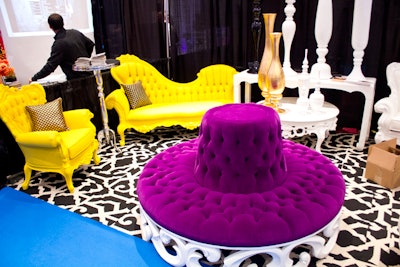



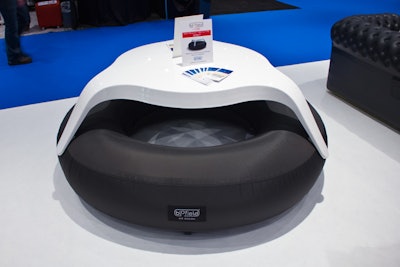
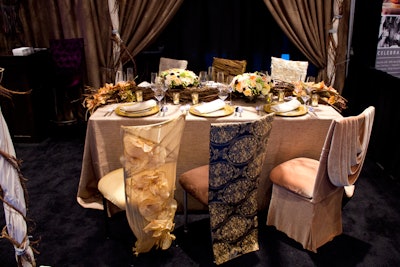
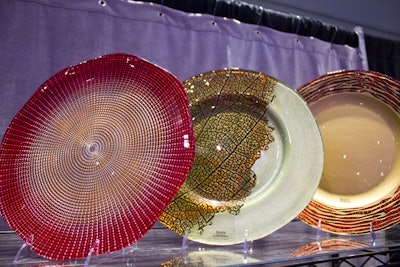

Bailey’s dramatic floral designs and theatrical flair have made fans out of celebrities such as Oprah Winfrey, Liza Minnelli, and Donna Karan, as well as brands such as Sandals Resorts, Godiva, and Hewlett-Packard. The high-profile New York-based designer’s lush, over-the-top designs have been featured in six books, plus countless TV shows and magazines.
On Twitter: @PrestonRBailey
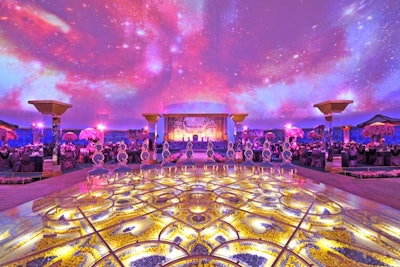
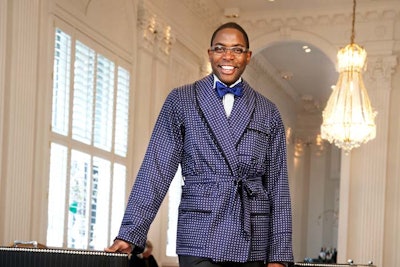
Wells launched his Washington-based, full-service production firm in 2004 and has since become one of the top planners in town, producing around 80 corporate, social, and nonprofit events a year in his signature glamorous, colorful style for members of Congress, BET, Dell, Disney, and more.
On Twitter: @AndreWells
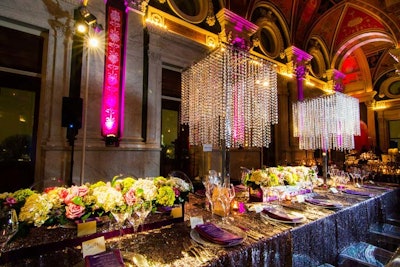
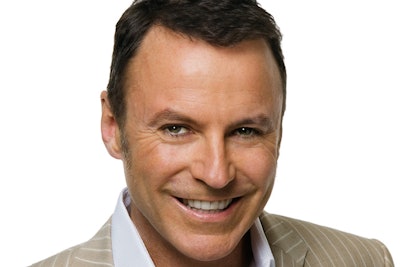
With a 26-year career that includes designing lush, extravagant events for big-name corporate clients and A-list celebrities, plus nine books, a wedding Web site, a line of home products for HSN, and too many television appearances to count, Cowie is a solid candidate for “Most Famous Person in the Event Industry.” He brings his five-senses design approach to around 25 projects a year, four to six of which he is heavily involved in.
On Twitter: @ColinCowie


Beahm’s inventive, breathtaking designs have been in high demand since his big break, planning the nuptials of Catherine Zeta-Jones and Michael Douglas in 2000. Beahm and his New York-based team design more than 200 events annually, including lavish social, nonprofit, and corporate parties for Memorial Sloan-Kettering, Victoria’s Secret, and Louis Vuitton. Beahm is especially known for his sculptural, dramatic floral arrangements.
On Twitter: @davidbeahmdesig
Beahm is speaking at BizBash’s Event Innovation Forum—South Florida on April 10.


Business partners since 2004, Los Angeles-based Abel and McCallister specialize in stylized editorial events, consumer promotions, sponsor lounges, and other brand-focused experiential events for clients such as Chase, Sprint, Entertainment Weekly, and Elle. Their designs often include surprising product installations, such as a chandelier of Godiva chocolates or a mosaic of Garnier bottles.
On Twitter: @larryabel
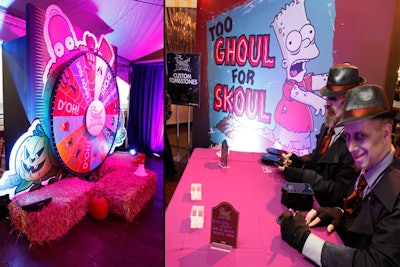
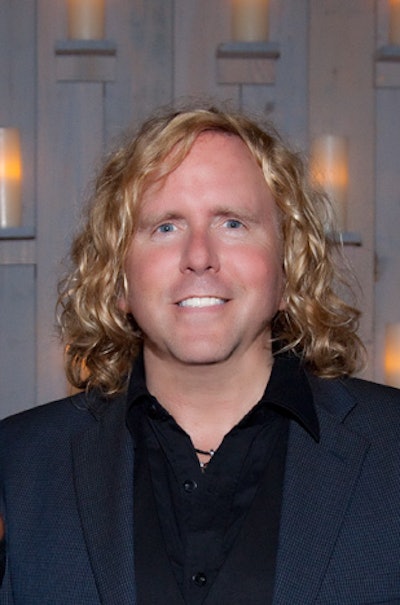
Butchkavitz’s claim to fame is the eye-popping, Technicolor decor he has been creating for HBO’s annual Emmy and Golden Globes parties since 1999. Using custom tents, carpets, and furniture, and drawing inspiration from such diverse sources as the stone mosaic walkways of the Copacabana in Rio de Janeiro, vintage Pucci fabrics, and modernist architect Oscar Neimeyer, his designs are always a kaleidoscope of color, patterns, and light projections.
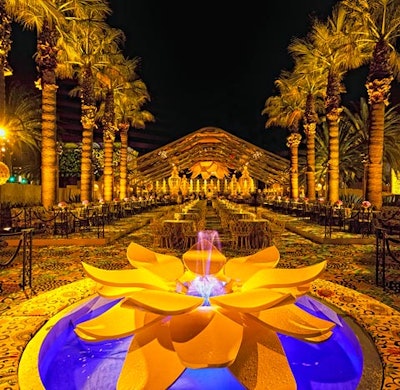
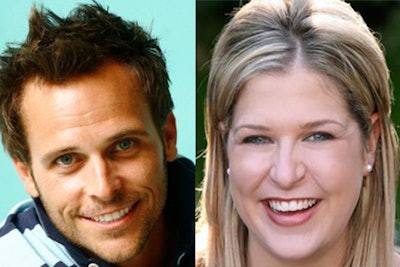
For four years, the Los Angeles-based creative duo has worked on designing movie premieres, product launches, and green-minded events including Fox’s American Idol finale party, the Foundation Polo Challenge, and the Teen Choice Awards.
On Twitter: @YourBASHjgeffen
On Twitter: @YourBASHbworley
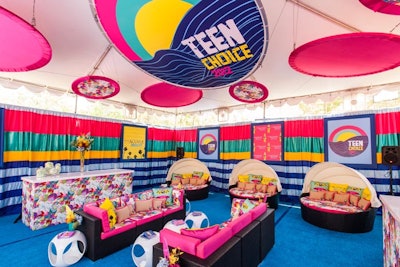
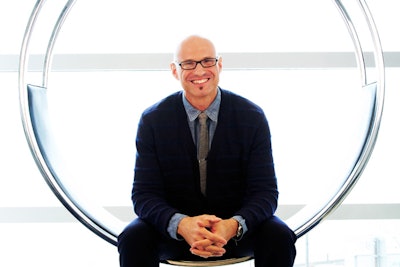
Clients such as Target, the Whitney Museum of American Art, and the IFC request Stark’s signature style, which combines an artistic sensibility with a sense of whimsy. Stark is known for using recycled materials and items that can be repurposed in his often flower-free installations and for his striking on-brand marketing ideas.
On Twitter: @DavidStarkInc
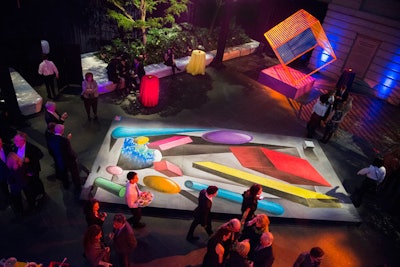

New York-based van Wyck honed his design skills working as a protocol aide at the American Embassy in Paris and as a film set designer in Los Angeles before starting a business with his mother in 1999. Adept at creating a polished, whimsical look, van Wyck’s clients include high-profile private, corporate, and nonprofit entities such as Mercedes-Benz, billionaire George Soros, and the Whitney Museum of American Art.
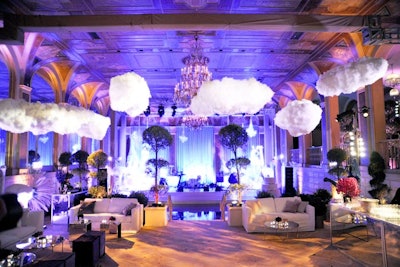
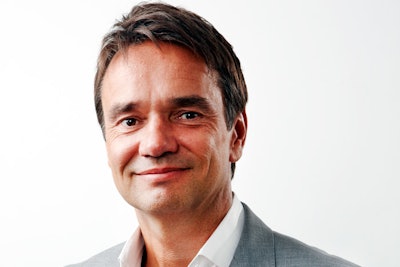
With more than 28 years of experience, Roick is a one-stop shop for Toronto events, designing show-stopping party decor for big-name clients like Target and Chanel.
On Twitter: @mcnabbroick

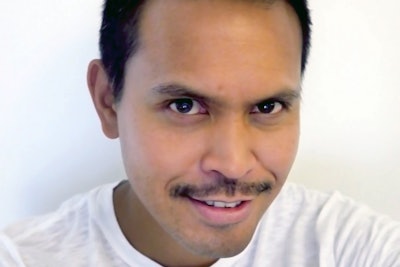
Since he launched his firm in 2006, Baura’s aesthetic has been influenced by his graduate degree in Japanese and Chinese art history. He creates fresh, edgy branded environments for clients like AOL and Tumi by incorporating unusual conceptual designs and 3-D structures. Recent projects have included LED trays, iPad walls, and vegetable totem centerpieces.
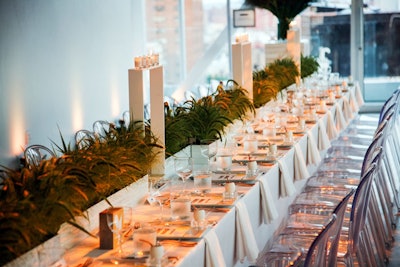
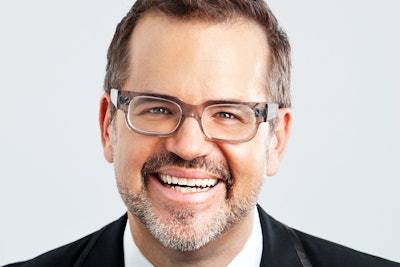
Fiscus founded his Dallas-based event design firm in 2003 and now personally designs and produces more than 250 events annually, including celebrity weddings and splashy events for clients like the Dallas Museum of Art, Audi, and Amfar. His company handles flowers, design, lighting, and installation and fabricates its own furnishings under the rental line Suite 206.
On Twitter: @toddevents
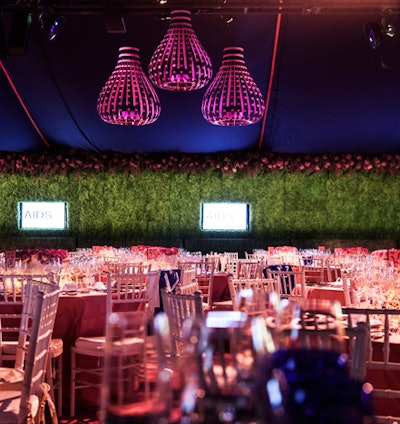
painted interiors." —Todd Fiscus
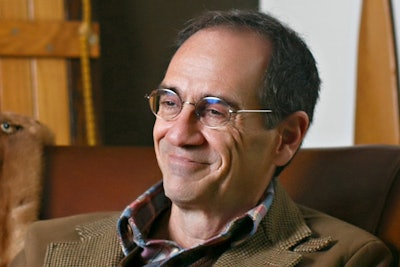
Bales founded the design and production division of Atlanta event company Bold American in 2003, where he specializes in creating layered atmospheres that highlight color and texture. His early career as a performer and musical revue producer informs the theatricality of his work, and his career highlights include producing premiere parties for NBC and the 10th anniversary celebration for the Indianapolis Colts.
On Twitter: @BoldEventsATL
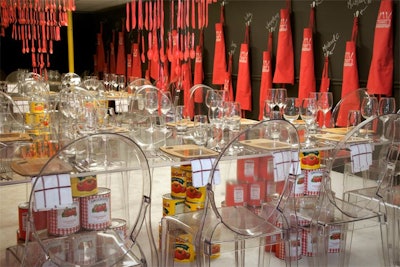
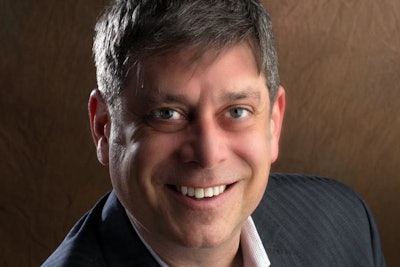
After a 10-year career in the fashion industry, Foster joined the Chicago-based Event Creative team in 2008. As senior event designer, he handles most of the company’s nonprofit business, designing as many as 100 events and galas a year for clients such as the Steppenwolf Theater, the Chicago Symphony Orchestra, and the Lyric Opera of Chicago.
On Twitter: @eventcreative
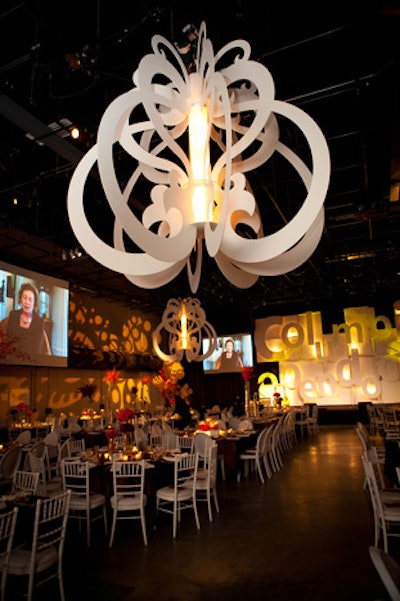
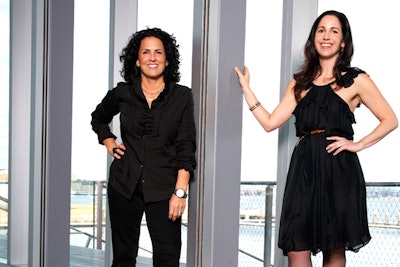
Gubitosa got her start in window displays and founded Boston-based event design and rental company PBD Events in 1985; Martin was a fashion stylist and boutique owner. The pair launched Phi Design Group five years ago. The duo often uses repetitive fixtures and found pieces in installations, and this spring they are launching an event rental branch called Reserve, specializing in custom tables, wall systems, and bars.
On Twitter: @phidesigngroup
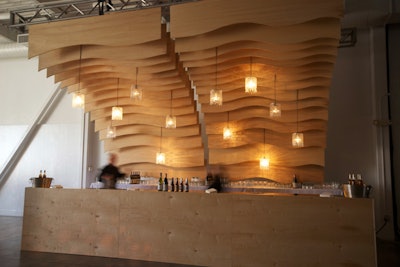
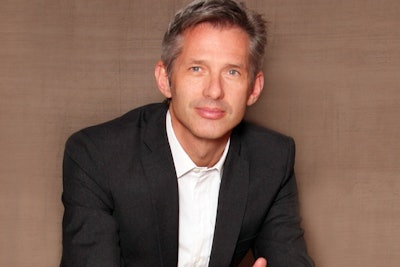
Perhaps best known as the man behind Chelsea Clinton’s wedding, Rafanelli started his company in Boston in 1996, producing just three events a year. He now has four offices across the U.S. and handles more than 100 parties a year, creating eye-popping decor for fund-raising galas, state dinners, and corporate events.
On Twitter: @RafanelliEvents
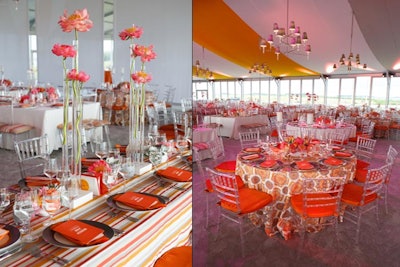
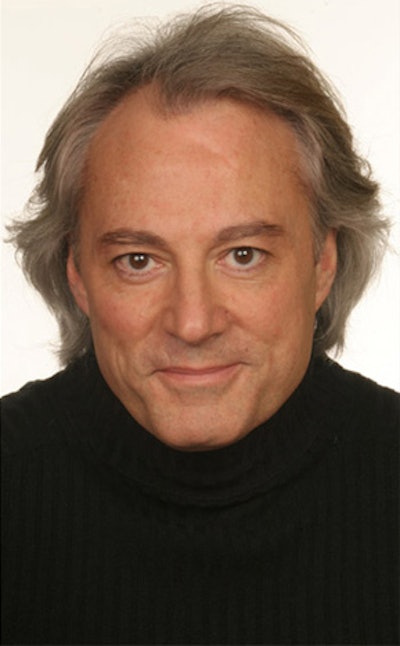
Leaving behind a career on Wall Street, Stroud decided to turn his longtime love of flowers and design into a business in 1996. He brings his sophisticated, clean look to events for clients such as the New York City Ballet, Universal Pictures, and HBO.
On Twitter: @DeJuanStroud
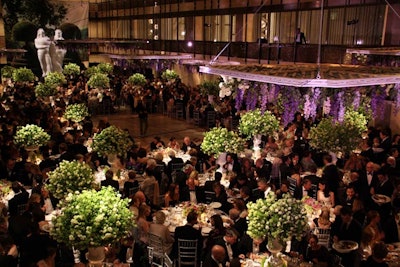

Hopkins splits his time creating contemporary, imaginative decor for social events and corporate events, benefits, and product launches for clients like Hearst, Uniqlo, and Evian. He always aims to be eco-aware, reusing and repurposing materials in stylish ways.
On Twitter: @360DesignEvents
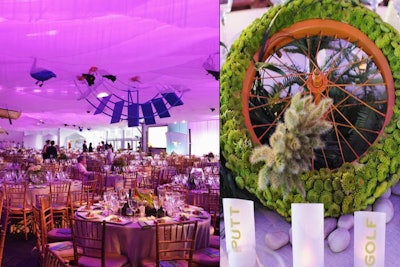

Heffernan started his Chicago firm in 1979 and has since merged it with two other local firms to form a design collective with different price points, specialties, and points of view. Heffernan’s elegant aesthetic has set the tone at some of Chicago’s most high-profile events, including galas for the Art Institute of Chicago and the Chicago Botanic Gardens.
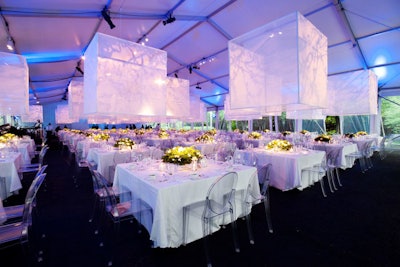

Gordon started her career working at a flower shop at age 13, followed by post-college stints as a movie set designer and design director of Tavern on the Green in New York. Twenty years after launching her own business, Gordon funnels her energetic personality into creating eclectic, funky designs for social and corporate clients.
On Twitter: @JesGordon
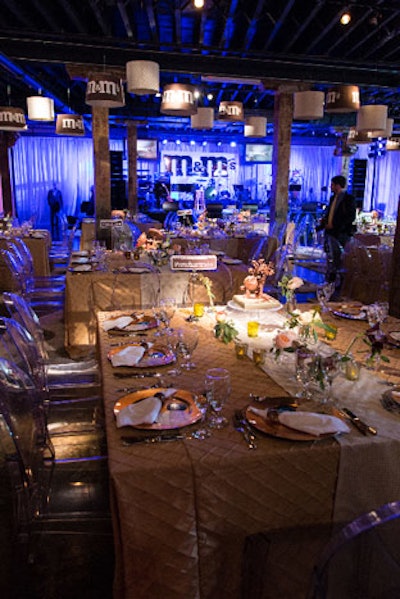

Balestrieri has been giving a downtown edge to brand-focused marketing experiences since 2002, when indie-minded Paper magazine launched its events arm. Designing thought-out, interactive environments for brands such as Absolut, Target, and Mattel, he often works with builders and fabricators to create large-scale, attention-grabbing event decor.
On Twitter: @ExtraCreative

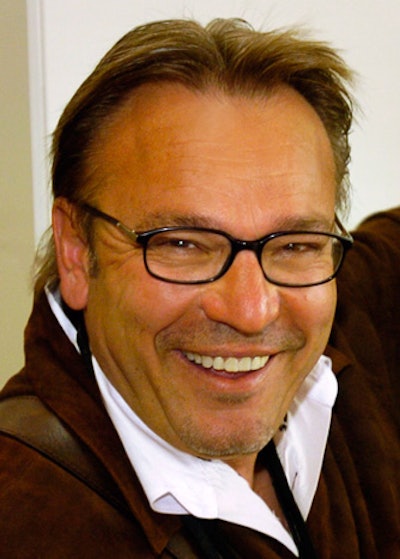
As San Francisco’s go-to event designer, Gatti has been creating visual art for high society weddings, glitzy galas, and fund-raisers for the likes of the San Francisco Opera, U.S. Senator Dianne Feinstein, and author Danielle Steele since the 1980s.
On Twitter: @StanleeGatti

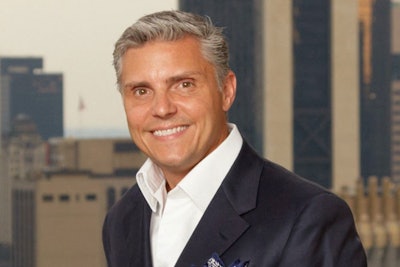
After working in the jewelry business and interior design for 17 years, New York-based Monn turned to event design in 2003, creating elegant, dramatic looks for high-profile clients such as Fendi, Tiffany & Company, the Time Warner Center, the Guggenheim, and the Metropolitan Museum.


The event designer—not that other Tom Ford—creates rich, luxurious-looking environments that often showcase dazzling overhead light installations and elaborate tenting for Hollywood’s elite. Perhaps most well-known for having designed the In Style and Warner Brothers Golden Globes party since 2002, Ford works with clients including Louis Vuitton, Sony Pictures, Disney, Fox, Victoria’s Secret, and Red Bull.
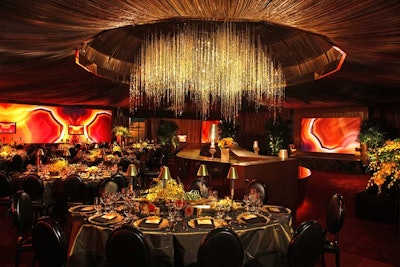
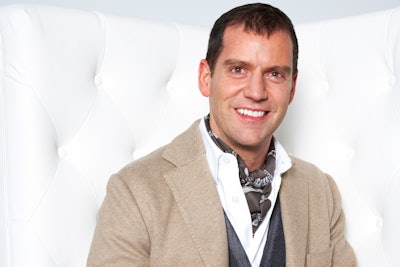
Eschewing themes in favor of creating captivating environments, Kehoe’s clients include prestigious charities, high-profile fashion brands, and discerning corporate groups. From ceilings filled with balloons to custom 18-karat gold tables to large-scale fabricated installations, the Chicago-based designer delivers on the wow factor.
On Twitter: @KehoeDesigns

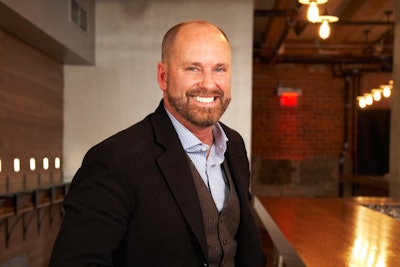
After seven years as the creative director of events for Boston’s premier florist, Winston Flowers, Hall launched his own Boston event and garden design firm in 2010. Hall, who often incorporates his own line of handcrafted vessels, furniture, and textiles into his designs, recently opened a garden-focused boutique called Marc Hall Objekt.

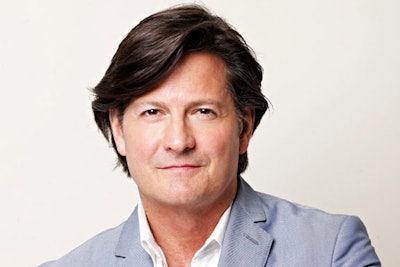
Wendt, who has a master’s degree in garden design from Columbia University, has been creating both contemporary and classic designs for the likes of Cartier, Swarovski, and Chanel since launching his New York-based company in 1991.
On Twitter: @RonWendtDesign
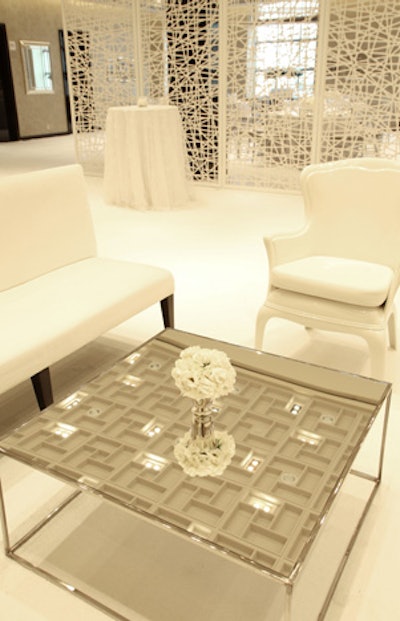
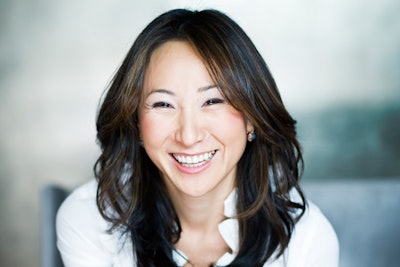
Since 2002, discerning brides and corporate clients have sought out Lee’s modern design sensibility. Conceptualizing, planning, and designing all happens in-house, translating to a cohesive, detail-oriented look, from custom light fixtures to stylized seating charts.
On Twitter: @JungLeeFete
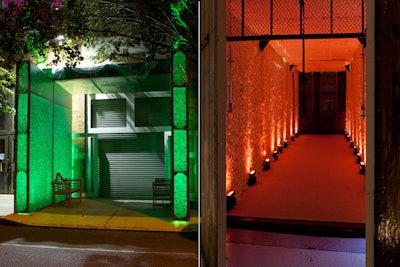

Over the past decade, Schubert has designed events for virtually everyone in the entertainment industry, with a client list that includes Rolling Stone, Disney, Vanity Fair, ESPN, and Entertainment Weekly. Combining modern ideas with clean accents, this past year has seen Schubert designing the SAG Awards after-party, the Emmys greenroom, Bill Clinton’s 65th birthday party, and Belvedere’s pre-Grammy celebration.
On Twitter: @event_eleven
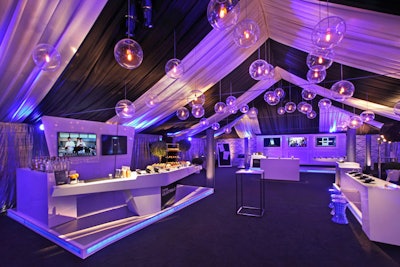
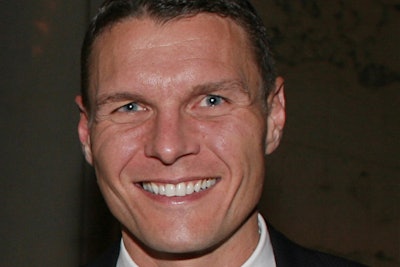
With a romantic, European aesthetic that tends toward the dramatic, Miller opened his New York event design boutique in 2002. He combines his rustic California farm country upbringing with a cosmopolitan edge to create lush, living installations for clients such as Givenchy, Paramount Pictures, Bulgari, and L’Oréal.
On Twitter: @LMDfloral
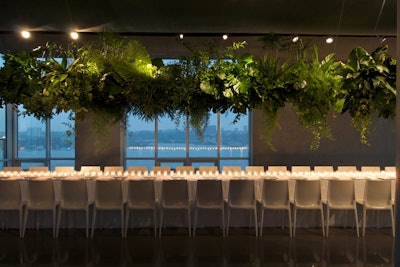
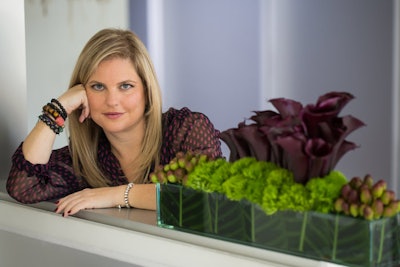
In 1992, after earning her degree in architecture and design, Dascal opened a floral import and delivery service. As demand for her sculptural arrangements grew, she expanded her services into event design with a full-service, Miami-based venture. Dascal is known for creating architecturally minded looks for clients such as Bulgari, Chopard, Merrill Lynch, and Valentino.
On Twitter: @karladascal

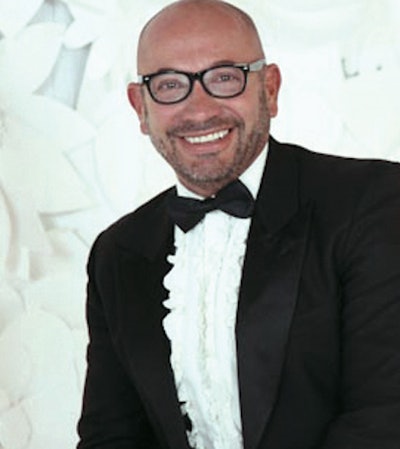
Based in Los Angeles, Argentinian-born Zamora travels everywhere from Italy to Hawaii to design made-to-order looks for roughly 350 events a year, including corporate galas for clients like Gucci and Subaru, movie premieres and screenings, award productions like last year’s Dream Foundation event, and social events.
On Twitter: @RevelryDesign
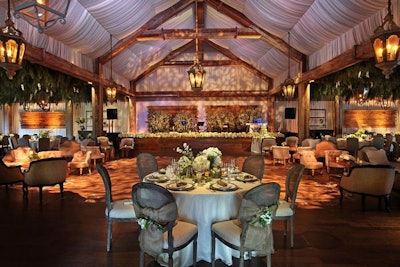
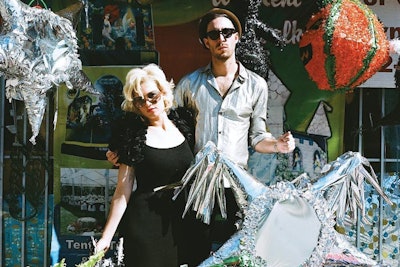
Stevens and Swift co-founded their creative agency in 2009, specializing in witty, immersive environments for brands. Combining set design, visual merchandising, custom installations, and interior design, the duo has created quirky, sometimes tongue-in-cheek experiences for clients such as Microsoft, Porsche, Zappos, and Sheraton.
On Twitter: @WeCameInPeace
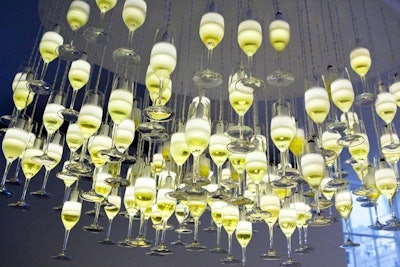
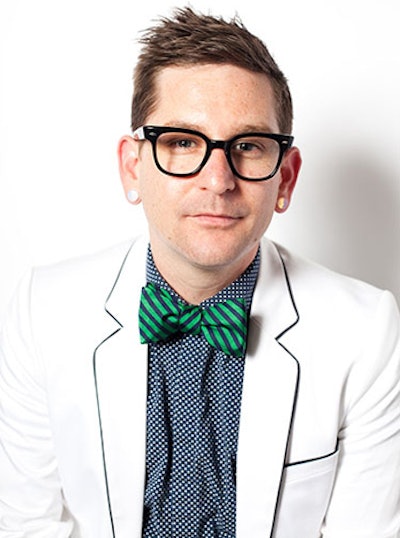
Through his Seattle design studio, Parker specializes in handmade event decor that has the feel of a modern art installation. With influences from geometry and typography to origami and pop art, Parker uses materials such as paper, cardboard, and plastic straws.
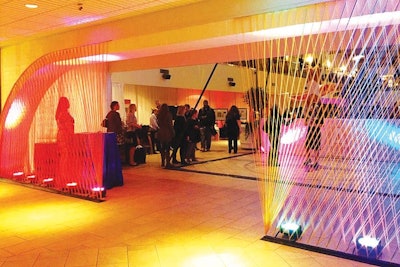

Todd founded his New York-based company in 1995 and has designed events for the likes of Condé Nast, the New York City Ballet, Elton John, and L’Oréal. His “less is more” design philosophy translates to a clean, classic aesthetic with a global spin. In addition to designing about 30 events a year, Todd also runs a retail furniture and home accessories line.
On Twitter: @antonytodd
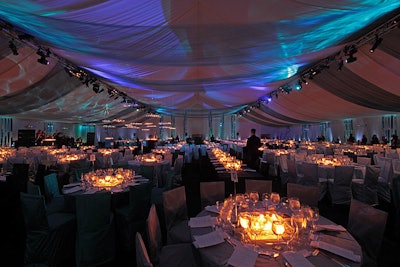
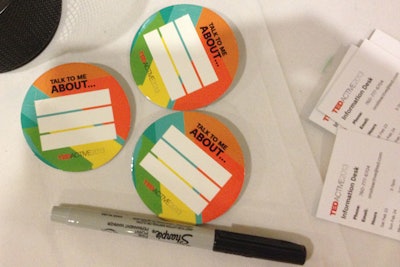
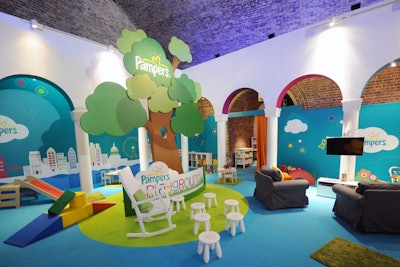
Content creation, in the form of photos, videos, or other material culled from live events and meant for sharing on YouTube, social media, or elsewhere, has been increasingly important to sponsors. All parties involved are now asking far more evolved questions about not just how to create it, but how to create truly great material that people will actually want to watch.
“There’s so much out there, so the [goal] becomes how to curate what is good versus bad. What are sponsors going to be able to actually use and gain traction on?” says Alan Miller, co-publisher of Filter and co-owner of Filter Creative Group. “A car company or a fashion advertiser might want to sponsor [our event], so they’ll expect a sizzle reel will go up on our site and millions of people will want to watch, but that doesn’t automatically happen. It needs to be compelling.”
Talk about a compelling idea that got wide traction: Procter & Gamble took to the London Olympics for a mom-focused campaign with an activation in the form of a 65,000-square-foot “home away from home” for the mothers of competing athletes (pictured). Its related global “Thank You, Mom” campaign celebrated mothers of athletes through ads run online, in print, on TV, and through social media. And a short film called Best Job was released on YouTube 100 days before the official start of the games, as was a “Thank You, Mom” app, which let consumers thank their moms by uploading videos, photos, or text-based messages to a dedicated Facebook page.

Sponsors know that content is more valuable the more people it reaches in the digital space. So the goal is to work with the best strategic partners to distribute it as broadly as possible—far beyond one brand’s own established audience. Sponsors want to reach the audiences of multiple, carefully considered partners as well.
For example, Filter produced a national bus tour for client Spotify (pictured), with content created at every stop. Near San Diego, the indie band Tegan and Sara played an intimate set for about 30 fans on the bus. The value of that set was amplified exponentially: In addition to using Spotify’s channel, partner Yahoo exclusively debuted the content. “We need partners to elevate our content,” Miller says. “If you pick a smart partner, you’re able to leverage distribution channels and get the content seen. Do your due diligence, taking those negotiations to the next step.”
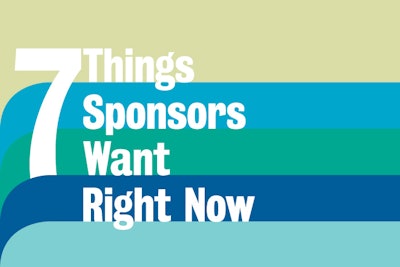
It might sound basic, but wireless Internet access is still not universally available, and sponsors want it badly. On-site social media needs to be able to flow and allow for instant response—“especially when it comes to surveys, contest fulfillment, and live-streaming from events,” says Angel City Designs’ Mark Yumkas, based on his team’s experience with recent events like the Battle 4 Atlantis college basketball tournament over Thanksgiving in the Bahamas. “Accessible, free, secure, high-bandwidth Wi-Fi is the backbone for all other applications,” Yumkas says. “You can design and activate all the compelling online social media activations you could possibly imagine, but if your guests or patrons cannot access the information in a timely fashion—or the sponsor cannot deliver all of the information that is created—then the content can be devalued from a performance and impression standpoint.”
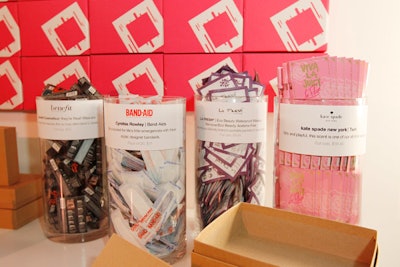
It’s not new that sponsors want to align with nonprofits, but the importance of pairing up with great causes is more important than ever for brands, especially in light of recent, widely witnessed tragedies like the damage wrought by Hurricane Sandy. Brands are seeking out nonprofits that fit with their visions for corporate responsibility and developing partnerships that go well beyond the hours of the live event.
Jennifer Howell, founder of arts nonprofit Art of Elysium, says sponsors have been reaching out to her group “all the time” versus the more traditional other-way-around route of event hosts courting sponsors. She indicates that she’s seeing charities trying to accomplish their marketing and philanthropic goals in one fell swoop by blurring the line between those previously separate budgets.
She described a recent partnership in which beauty product delivery company Birchbox sponsored a couple of the charity’s events, setting up a bar (pictured) where people could come and fill their own boxes with products of their choice. Some of the charity’s supporters built their boxes, took photos, and gave quotes that were used for an online promotion that focused on the charity’s work as well as the holiday product collection.
Birchbox then put the organization’s logo and mission on its boxes, which were distributed to all of its shoppers in November, as part of a holiday giving campaign. “This helps us greatly to reach a new audience with our mission,” Howell says, while also acknowledging the benefit to Birchbox’s bottom line at a time when its consumers are eager for feel-good stories.

When sponsors shell out dollars, they want to know they’re buying unique access to distribute event content. Guerrilla or other piggyback event marketing—not to mention anyone on site with a smartphone—can diminish that value. Sponsors these days want to limit that.
“We are seeing, especially at larger, higher-profile events such as the Super Bowl, Oscars, etc., there is an ever-increasing number of ambush marketers that surround these events. They are not paying any sponsorship fees yet are producing both online and live activations,” Yumkas says. “We have seen everything from our own vendors and their on-site staff texting, tweeting, and posting live from events. I have witnessed using our intellectual property and our client’s intellectual property for their own gain, without permission or approval. Now, we make all vendors and their staff sign an extensive [nondisclosure agreement] that prevents them from doing this. We monitor it constantly and the default, especially with our vendors, as part of the NDA, is forfeiture of fees or partial fees of goods and services provided if we find a violation.”
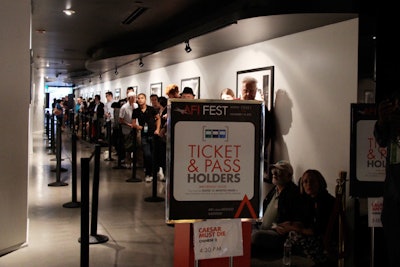
Yes, many sponsors want to align with a select, invite-only crowd of “influencers.” But in the current climate, sponsors—including some elite brands—are also looking for mass-market exposure.
For instance, luxury automaker Audi is the title sponsor of the American Film Institute’s A.F.I. Fest (pictured), which now gives free tickets to consumers. “Access to our audience gives Audi the ability to reach a wide variety of potential customers in a relatively short amount of time,” says festival producer Derek Call. “The festival attracts an audience comprised of both industry professionals and movie lovers from all over the globe, and we generate billions of impressions for them other than just the eyeballs of those guests in attendance. Our guests see what Audi has done for them by giving them a free ticket and by supporting the art of filmmaking. It shows how Audi as a brand is accessible to all different types of potential car buyers, and at the end of the day, Audi needs to sell as many cars as possible."
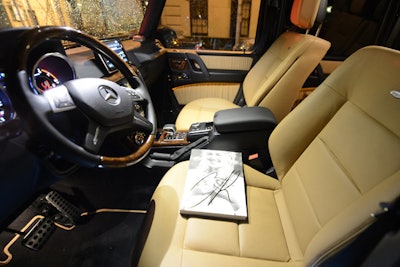
It’s still key for vendors to get attendees interacting with products, not just looking at logos. Sponsors want guests to experience their brand as they would as consumers outside of events in immersive, authentic-feeling sponsorship integrations.
In September, Mercedes-Benz partnered with Carine Roitfeld on the launch of her new magazine, CR Fashion Book, sponsoring the black-tie gala at the Frick Collection in New York. The event offered guests a sneak peek of the magazine from inside the comforts of the brand new G63 AMG, parked outside the museum (pictured). The next day, media could preview advance copies of the magazine in the Mercedes-Benz Star Lounge at Lincoln Center. “Experiential marketing has been a consistent and significant part of our arsenal,” says Mercedes-Benz USA department manager of brand public relations Adam Paige. “It’s an element that is a cornerstone of our activations. Experiential on a physical car level, yes, but also a brand experience—it’s a Mercedes-Benz experience.”
Similarly, last summer Lucky Brand hosted an event at a Malibu beach house with an intimate concert by Regina Spektor, but nary a logo was in sight—part of an effort to avoid heavy-handed marketing to an upmarket audience. In the gift bags, guests received a certificate for a private fitting of a custom denim wardrobe at the brand’s new downtown Los Angeles headquarters. That personalized appointment exposed them to the product and the brand’s culture in a meaningful way.

Wella, a division of Procter & Gamble, had one of the largest exhibits at 10,000 square feet. Eight large screens of various sizes created a backdrop for the sleek white stage, so even attendees just passing by could see the action.
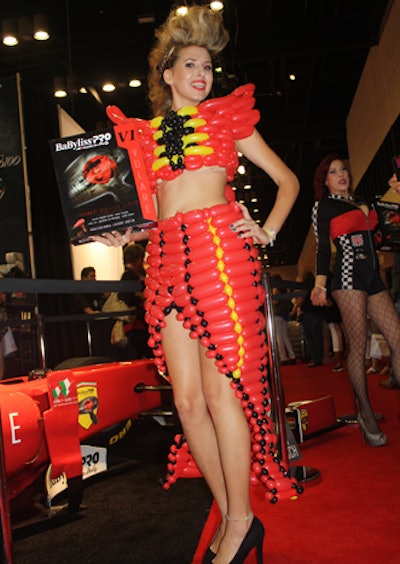
BaByliss Pro dressed its models in outfits made with hundreds of balloons.

Chandelier lighting created an eye-catching accent at the Moroccan Oil booth.
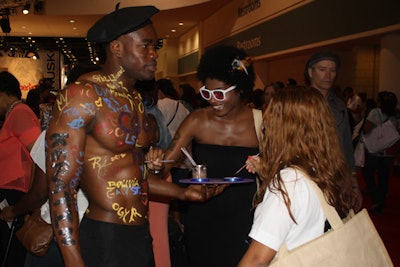
To create buzz about its new color line, Keratin Complex invited guests to decorate two shirtless male models with body paint.

Most of the exhibitors played loud, high-energy music in their booths, and a few—like Redken—brought in a professional DJ.
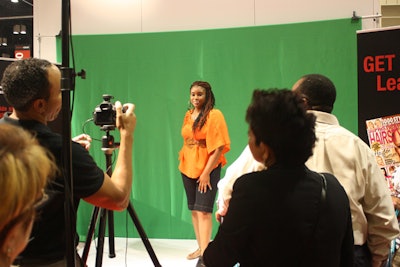
Matrix created a photo booth where guests could have their picture printed on a mock cover of Sophisticate’s Hairstyle Guide magazine. Each participant took home a 4- by 6-inch glossy photo.

To highlight the natural qualities of its skin and nail products, Cuccio Naturalé displayed its products on three-tier circular stands to look like a farmers' market.

Crowds gathered to hear presentations from beauty industry celebrities such as Sam Villa, Redken’s education artistic director.

Product demonstrations, such as nail treatments from Dashing Diva, drew steady crowds.

Stylist Peter Coppola was a new exhibitor at the show, creating a contemporary 3,000-square-foot booth that he said was modeled after the design of his home. To celebrate the launch of his new Keratin Concept collection, Coppola held a drawing for a new Fiat 500 Pop.
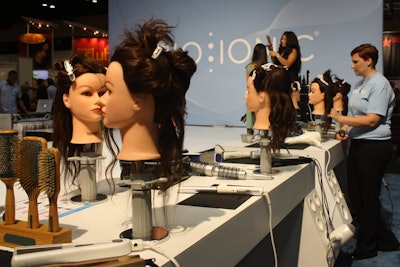
Bio Ionic invited attendees to try techniques on one of 16 mannequin heads set up on either side of its stage.
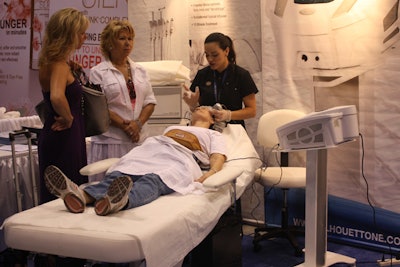
Many exhibitors offered quick demonstrations of their products, while others, such as Silhouet-Tone, provided more extensive services such as 35-minute antiaging treatments.














